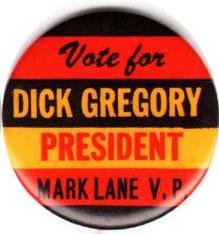 Muhammad Ali was born on January 17, 1942. When I was growing up, my grandfather McKinley told me that being the heavyweight champ in boxing was a most notable achievement.
Muhammad Ali was born on January 17, 1942. When I was growing up, my grandfather McKinley told me that being the heavyweight champ in boxing was a most notable achievement.
This brash young man out of Louisville, KY, named Cassius Clay, who had won the Light Heavyweight gold medal in the 1960 Summer Olympics in Rome, and tossed his medal into the river, because being an Olympic champion, did not inure one from racism. (Or he just lost it.) He was an underdog against reigning champ Sonny Liston.
Most thought his pre-fight chatter that he would “float like a butterfly and sting like a bee” was just talk. But he beat Liston on February 25, 1964, in Miami, becoming the youngest boxer to take the title from a reigning heavyweight champion. His new name was announced shortly after that fight.
Ali was stripped of his title in 1967 for his refusal to be drafted into the Army service. He was denied a boxing license, first in the state of New York, and eventually by every state. He was convicted on June 20 of that year of draft evasion. He was not allowed to “fight from March 1967 to October 1970—from ages 25 to almost 29—as his case worked its way through the appeal process. In 1971, the US Supreme Court overturned his conviction in a unanimous 8-0 ruling (Thurgood Marshall abstained from the case).”
After Losing three and a half years in boxing, Ali had his first fight against champ Joe Frazier, held at Madison Square Garden on March 8, 1971. Ali suffered his first professional defeat.
When he defeated Frazier in a rematch a couple of years later, after Frazier had lost the crown to George Foreman, Ali regained the title against Foreman in Kinshasa, Zaire, on October 30, 1974. In February 1978, he lost to young Leon Spinks in Las Vegas, but won a rematch a little over a year later, making him the first heavyweight champion to win the belt three times.
It was Ali’s name change, fighting to have it accepted against the conventions of the day, and his successful opposition to the Vietnam war, more than his boxing, that most interested me about the man.
Ali was diagnosed with Parkinson’s syndrome in 1984. Yet he remains one of the best-known, and beloved, persons in the world, as he engaged in philanthropy, “involved in raising funds for the Muhammad Ali Parkinson Center in Phoenix, Arizona; supported the Special Olympics and the Make a Wish Foundation among other organizations, and has traveled to numerous countries… to help out those in need. In 1998, he was chosen to be a United Nations Messenger of Peace because of his work in developing countries. In 2005, Ali received the Presidential Medal of Freedom from President George W. Bush.”
I was saddened, but not surprised that he died this weekend at the age of 74.
LINKS
The late Ed Bradley’s interview with Ali on 60 Minutes in 1996
Michael Rivest: The greatest is Gone





